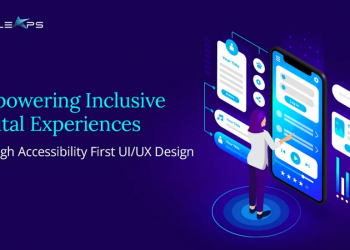Although it may look like every company’s website has the same basic structure and features, there are actually quite a few elements that vary tremendously depending on your industry and vertical.
The biggest division in the way business websites are designed has to do with whether your business is B2B or B2C. Just like your overall business strategy, your website will have unique needs and requirements that won’t be the same if you were targeting businesses instead of consumers or vice versa.
We recently interviewed a top-rated web design firm in Portland about their insights on this topic. Keep reading to learn the six most important differences between B2B and B2C websites.
#1. Consumer Intent
Consumer intent refers to what someone is looking to accomplish when they land on your website.
For a B2C site, this is usually pretty straightforward. Most people are either looking to buy a product or learn more about the company before making a purchase. They are driven by emotion and need products that appeal to their feelings.
B2B consumers, on the other hand, tend to need more complex and logic-driven solutions. They are looking for products that will help them solve a specific business problem or improve their bottom line in some way.
This means B2C websites should focus on more fun and engaging advertising materials, while B2B websites need more detailed, to-the-point information.
#2. Purchase Process
The purchase process is the steps someone takes to go from being a casual browser to a paying customer.
For B2C web design, this is typically a shorter and simpler process since people are buying for themselves. They just need to find the product they want, add it to their cart, and checkout.
For B2B web design, the process is longer and more involved. Businesses need to first evaluate whether the product is a good fit for their needs and if it will be worth the investment. They also need to get approval from their boss or team before making a purchase.
This means that B2B web design needs to include features that make it easy for businesses to request quotes, compare products, and get in touch with a sales representative.
#3. User Experience
The user experience (UX) is how easy and enjoyable it is to use your website.
While both website types need good UX, browsing a B2C web site should be more fun and engaging since casual shoppers don’t want to put too much effort into their personal buying decisions. The focus should be on making the site visually appealing and easy to navigate.
For B2B web design, the focus is more on making the site functional and informative. The goal is to help businesses make quick and informed decisions about products. This means that B2B websites need features like detailed product pages and case studies.
#4. Site Structure
The site structure is the way that the different pages on your website are organized and linked together.
Once again, B2C websites should be more simple than their B2B counterparts. Unless you’re an ecommerce site that needs to build hundreds of product pages – if you do have an ecommerce business with a large number of SKUs, consider using WooCommerce for your website as the open-source shopping cart can keep your cost down and provide flexibility in many features.
Keeping the website small, compact, and streamlined is a good strategy for not overwhelming customers.
On the other hand, B2B websites need to be much more comprehensive, with more pages and sections. These pages will need a detailed organizational structure with reliable navigation.
#5. End Goal: Sales Vs. Generating Leads
Although this may vary slightly depending on your specific industry and business, in general, B2C websites are primarily focused on generating direct sales while B2B websites are focused on generating leads.
This means that a B2C website should be designed to funnel visitors towards the checkout page, while a B2B website should be designed to get visitors to fill out a form or to get in contact with someone at the business who can guide them through the next steps.
#6. Call to Action
Alongside the different end goals comes different call to actions, or CTAs. Since B2C businesses are more sales driven, their CTAs will be focused on getting visitors to buy a product or sign up for a service. CTA buttons that say things like “Buy Now” “Sign Up Today” or “Purchase” should be heavily utilized across product pages and advertisements.
Since B2B websites are more lead generation focused, the CTA buttons should say things like “Get a Quote,” “Request More Info,” or “Contact Us.”
Conclusion
When it comes to web design, there are some subtle differences between B2B and B2C that can make a big difference in their performance.
In general, B2C design should be simpler, easier to use, and more emotion and sales-driven. B2B design, on the other hand, should be more complex, informative, and logic and lead generation-driven.









